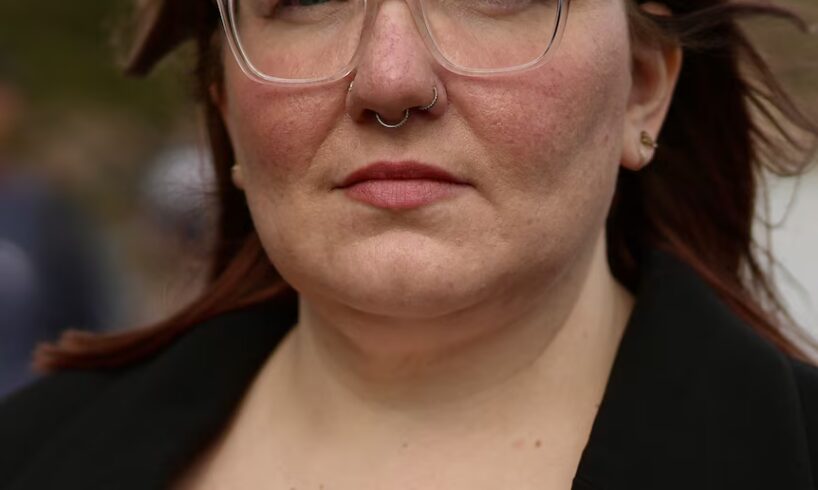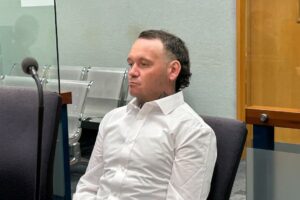
Tamara Rhodes knows from her daily experience that she is poor — making tough choices about what food to buy, putting off health treatment and buying medicines because she cannot afford them.
But the way we measure poverty in Australia means the government probably doesn’t know how much she’s struggling.
“When I do a grocery shop, I put everything that I need into the trolley in hopes that when I get to the register, I’m able to afford it,” the mother of two says, describing watching the total cost “rack up” as the trolley empties.
“I’m wondering if I’m going to be able to afford what’s left in it, and sometimes experiencing the embarrassment and the shame of having to remove items out of the trolley that I can no longer afford.”
Tamara has two daughters, and she worries her situation will become theirs.
“Struggling with feeling like you’ve failed your children is gut-wrenching.”
That feeling of poverty is real.
But when it comes to measuring it, Australia still doesn’t have an agreed idea of what poverty is.
How many people live in poverty? We think we know
In 2024, the Productivity Commission estimated 14 per cent of the population — roughly one in every seven people — lives in poverty — that’s the highest estimated level since 2001.
The commission’s estimate is based on Australians living on incomes below 50 per cent of the median, but there’s no broadly agreed “number” or official index used across the economy.
In Anti-Poverty Week, advocates are calling for the government to adopt what’s called a multi-dimensional poverty index to firstly track and then reduce the number of people living without.
Australia’s housing obsession fuels income divide, leaving renters behind
Brotherhood of St Laurence (BSL) chief executive Travers McLeod says we need to look at multiple elements that impact on a person’s wellbeing.
“Poverty is about more than income.
“It’s also about a lack of access or affordability to essential services like health, housing, education and employment. It’s a lack of social connection and also a lack of income,” he says.
Travers McLeod says Australia focuses on headline numbers around growth, productivity and inflation.
(Supplied)
Overseas models examine what Dr McLeod calls the “incidence and intensity of those deprivations” and helps us to understand the reasons why people are poor and how to target effective responses.
“About 160 countries around the world have official poverty measures today, either a monetary measure or a multi-dimensional measure.
“Best practice is to have both —Australia has neither.”
But don’t we already have a ‘poverty line’?
The call comes 50 years after the landmark Henderson Review into poverty set a measure for an “austere standard of living” that become known as a “poverty line”.
It has since been referred to as the Henderson Poverty Line (HPL), after Commissioner Ronald Henderson who led the probe.
In September 1973, the line was $62.70 per week for a family of two adults and two children.
By March 2024, it was $1,150.39 per week for the same family.
Currently, unemployment benefits are called JobSeeker (previously NewStart and colloquially, “the dole”).
The JobSeeker rate for a single person with dependent children is currently $424.95 a week ($849.90 a fortnight), although other income supports such as family tax benefits may complement this.
The Henderson Poverty Line is still used. But the world has changed.
From the traditional “male breadwinner model” of the 1970s, most adults are now in full or part-time work.
A quote from 1975’s Poverty in Australia: first main report, a summary of what became known as the Henderson Inquiry. (Supplied: National Library of Australia)
The concept of “full employment” has changed and housing costs — both home loan repayments and rental payments — started to take an ever-increasing chunk of incomes.
Roger Wilkins, deputy director of the Melbourne Institute, told a gathering to mark the 50th anniversary of the review that “we have seen the pressures on Australians change dramatically since 1975”.
“For example, access to key services and opportunities that are essential to an acceptable standard of living — such as running water, adequate health care and appropriate employment — are not captured if we measure poverty using only household economic income,” Professor Wilkins notes.
More complicated than a single number
Melek Cigdem-Bayram knows all about how Australia does and doesn’t measure poverty, something that’s obvious when you learn her job title — the Ronald Henderson Senior Research Fellow.
Melek Cigdem-Bayram says failures in measuring and tracking poverty are limiting improvements.
(ABC News: Darryl Torpy)
She describes “a lot of inconsistent measures” being reported by government organisations, researchers, advocates and others.
She notes that some include housing costs, while others deduct them.
Some take into account who is in the household — like children and dependent older people — but others don’t, and figures often don’t adjust for wealth, such as owning property.
Will AI trigger a UBI?
Dr Cigdem-Bayram says a multidimensional index would give us deeper insight.
She gives the example of two people who are “equally poor” when it comes to the amount of income they have.
“One of those individuals could be a single mum who has caring duties for a child who has a disability, and she isn’t able to participate in the labour market as a result,” she says.
Someone living off the same income could be in a very different situation — for example, a retiree living in a home they have paid off and with no dependents.
“If we use an income-only measure, then those two individuals would look like they’re equally poor and the challenges of the single mum would be invisible in the eyes of the system.”
A multidimensional measure captures more, the University of Melbourne researcher adds.
“By looking only at a single measure of poverty, we really are letting down a proportion of the population that don’t have access to services and opportunities that are available to the average Australian.”
Canada reduced poverty by measuring it
International experience is that there are measures that give a more sensitive indication of changes, like the impact of inflation in the price of groceries or housing, than the simple “how much you earn” measure.
“It has to do with different people’s ability to convert resources into outcomes,” says Sabina Alkire, a global expert who has discussed the concept with Australian parliamentarians, as groups attempt to kickstart the idea locally.
Sabina Alkire is advocating for a multidimensional poverty index. (Supplied: Oxford Conversations)
Professor Alkire directs the Oxford Poverty and Human Development Initiative (OPHI) at Oxford Univerity’s Department of International Development and says governments can be worried that starting a new poverty measure is like creating a stick they can be hit with.
“Traditionally, poverty has made governments feel slightly horrified that something will happen in a macroeconomic environment and poverty will go up — when it’s not their fault,” she says.
“[But] with a multidimensional poverty measure, it measures things like education, like health care, like housing conditions and services, things that government interventions can change.
“And when these changes happen — immediately that year — the multidimensional poverty changes.”
BSL’s Dr McLeod says countries very similar to Australia — Canada and New Zealand — adopted the measures in the past decade.
“In New Zealand [it’s] for children, Canada for the whole population.
“And they’ve adopted national poverty reduction strategies as part of that, and seen quite significant reductions in poverty since those official measures were introduced.”
Government’s advisory body calls for better understanding of poverty
The Economic Inclusion Advisory Committee, an ongoing body to review the adequacy of welfare support, says creating official poverty measures “should not be difficult”.
‘Imputed rent’ and what it could mean for a fairer Australia
In its most recent report, it recommended the government legislate for the Australian Bureau of Statistics to start collecting a broader measure of poverty:
“Global best practice suggests that the best measures of poverty have … two components: monetary and multidimensional, are undertaken by their nation’s chief statistical organisation — in our case the ABS — [and] are reported on annually.”
Treasurer Jim Chalmers didn’t respond to questions about poverty measures, or if the government intends to introduce a multidimensional measure, by our publication deadline.
For Tamara Rhodes, it remains a shock that we count poverty in such a basic way.
“We’re essentially a wealthy country compared to some, and some of our residents are doing it really tough,” she says.
Tamara Rhodes wants the bureaucrats who design support systems to listen to people like her. (ABC News: Darryl Torpy)
The stigma and shame, the feelings of isolation and fear, are not things she wants to feel.
“But unless you’ve lived in my shoes you don’t know the struggles.”
Source





